Beat Root Multi Scale Tongue Drum Review
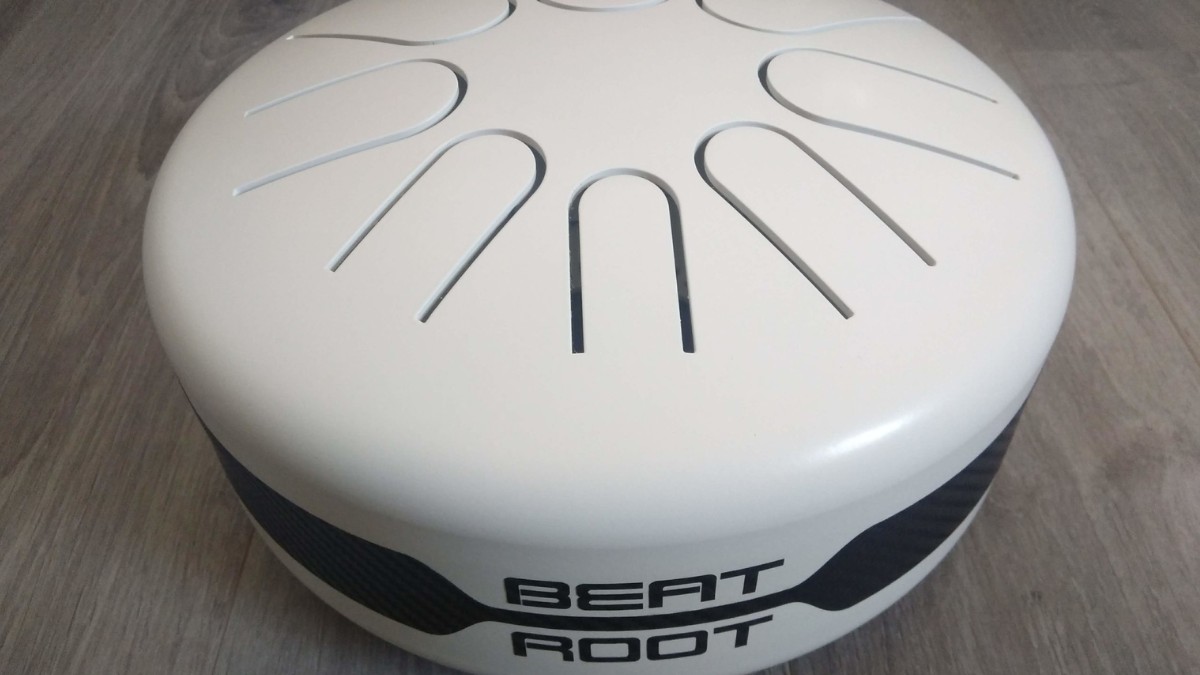
Today we’re going to talk about the Beat Root Multiscale Tongue drum, which is a tunable tongue drum with a built-in microphone and great design.
Disclaimer: I was sent a free sample of this multi-scale tongue drum by Beat Root, but this is an honest review and I’ve clearly listed what I believe to be the pros and cons of this product.
I always enjoy playing steel tongue drums. The variety of tones and textures that you can get from them is quite amazing.
The features of this particular drum make it quite versatile for many different types of performances.
Who is the Beat root multi-scale tongue drum for?
This drum is first-and-foremost, an acoustic steel tongue drum. So it’s suitable for anyone that wants to get their hands on the melodic, percussive, bell type sound that is iconic of these type of drums.
However, I believe the tuning system and microphone make this instrument particularly good for:
• Musicians that want an easy setup for performing live.
• Buskers and street performers.
• Live music producers that want to add some live flair to their set.
Tuning system
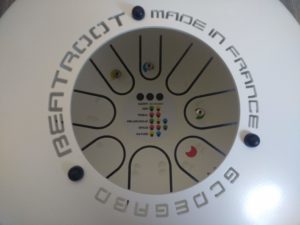 You can very easily tune this drum using a simple but effective magnet system. The steel tongue drum comes with 3 magnets that enable you to tune the drum in the following 6 scales. There is a legend underneath the drum which makes it easy to follow.
You can very easily tune this drum using a simple but effective magnet system. The steel tongue drum comes with 3 magnets that enable you to tune the drum in the following 6 scales. There is a legend underneath the drum which makes it easy to follow.
Please note: that this drum is based on the G scale, so following one of these is the best way to get the most out of the tongue drum:
Happy: G. C. D. E. G. A. B. D. (Major scale)
Zen: G. C. D. Eb. G. A. Bb. D. (Minor scale)
Tribal: G. B. D. E. G. A. B. D. (Pentatonic scale)
Melancholia: G. C. D. Eb. G. A. Bb. C.
Space: G. B. D. Eb. G. A. B. D.
Nature: G. C. D. E. G. A. Bb. C
My favorite scale to play on is the Melancholia, which is a little darker in tone! It’s worked quite nicely for me when adding extra synths, percussion, and effects to the sound.
You’re also free to experiment because these are not the only scales that you can tune the drum to. However, you might have to limit the playable surfaces you’re using.
Playing surfaces
The tongue drum consists of 8 playable notes. You can either play with your hands or with the included pair of mallets.
Playing with your hands allows for a greater variety of sounds. It also allows you to get that higher end treble sound produced when your hand hits the playing surface.
Alternatively, the mallets produce a significantly different timbre.
The material of the mallets make for a more muffled attack when striking the playing surface. However, the resonance of the drum can still build up a significant amount of volume if you wish. This is also nice for background or more ambient sounds.
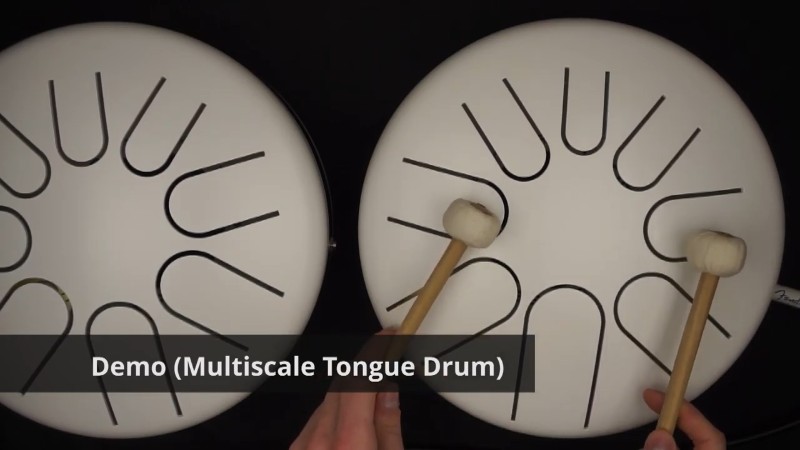
Built-in microphone
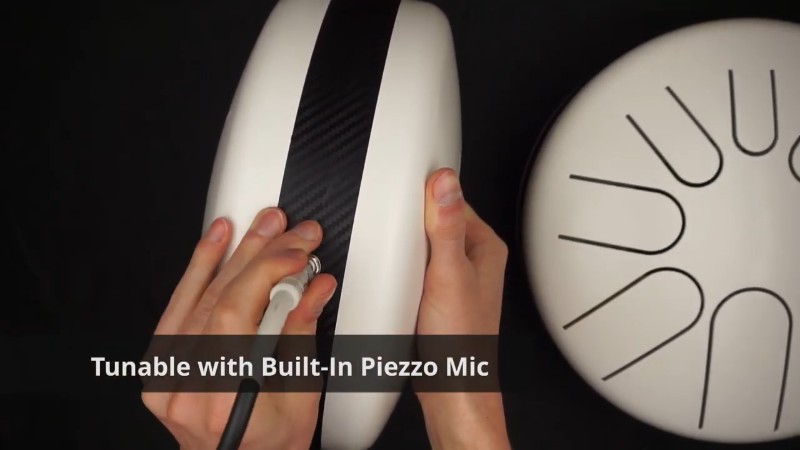
This drum is really a joy to play and experiment with. You can hook in its built-in microphone up to an amplifier or recording interface for some great sonic possibilities. You could pass the signal through effects pedals, loopers, or any amount of plugins on your DAW of choice (e.g. Ableton, Cubase, Logic, etc.)
For music with a lot of electronic elements. Some examples of audio processing that yield some nice or interesting results with the Beat Root multi tongue drum are:
• Reverb
• Looping
• Delay and echo effects
• Beat mashing
Based on my tests of this, the microphone quality is good and you could use it for live performances or even recordings.
In my case, I used it with a Focusrite Scarlett audio interface.
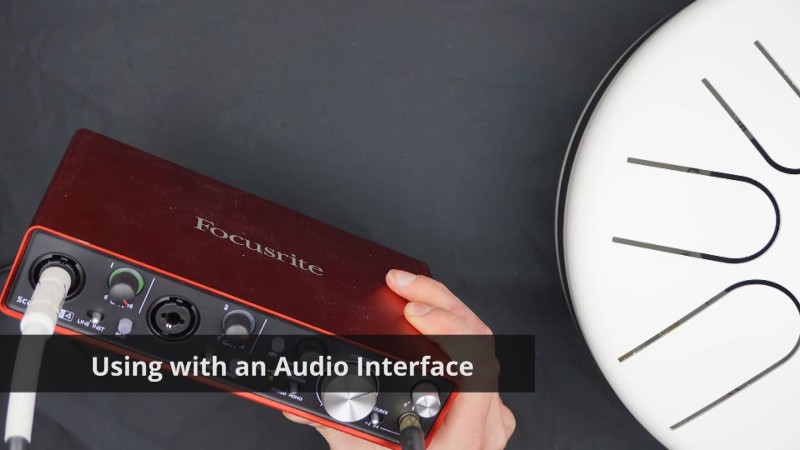
Carry case
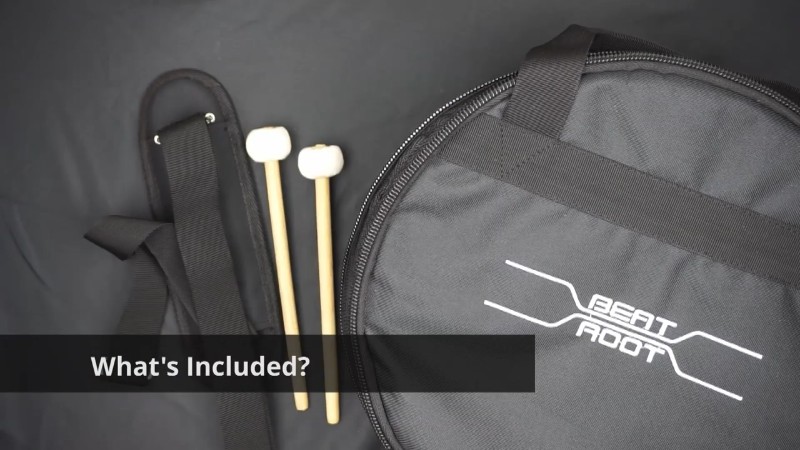
The version I got came with a carry case. I was actually very surprised at the quality of it. It’s very well made and I would expect it to last a long time. I honestly think this would be able to withstand touring, which again, makes this great for musicians that move around a lot.
Design
It’s quite a sturdy unit, weighing approximately 11 pounds (5kgs).
The design of this is quite slick and futuristic looking. If you’re looking for a more traditional looking percussion instrument then this one is not for you! However, for anyone else, I think the design is pretty cool.
The design is available in multiple variations of black and white. The one in the pictures below is the one marked as ‘White’, which has the Beat Root logo in black.
Different Beat Root drums
There are currently 3 main different versions of Beat Root steel tongue drums on the market:
• Multiscale Tongue Drum – This is the version that we’ve talked about in this article.
• Electro-Acoustic Drum – It’s the multi-scale tongue drum without the tuning system.
• Acoustic Tongue Drum – The acoustic-only version of this (no mic or tuning)
Which version should you get?
If you have the budget, I firmly believe that it would be well worth splashing out a little bit more to get the multi-scale tongue drum. Switching between different scales really gives you so many more possibilities in your sound.
Negatives
I really couldn’t identify many negatives to this steel tongue drum.
When you’re using the microphone then make sure to watch the gain on the channel you’re using or use a limiter because this is a very dynamic instrument. Though that’s not really a criticism of this drum, you would expect that from any instrument like this.
It’s certainly not the cheapest steel tongue drum on the market, some people might not have the budget for it. It’s a bit of an investment, but I do think it’s worth it.
As mentioned before, I think the design looks very slick – though if you’re looking for a more traditional looking percussion instrument then you might see that as a negative.
Conclusion
All in all, I’m very happy with the Beat Root tongue drum. It’s well constructed, sounds great, and has very useful features.
If you’re getting your hands on one of these then make sure you’re getting the correct version. I’d recommend the Multiscale tongue drum over the others, simply because of the tuning features that come out of the box.

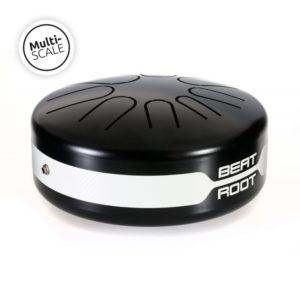


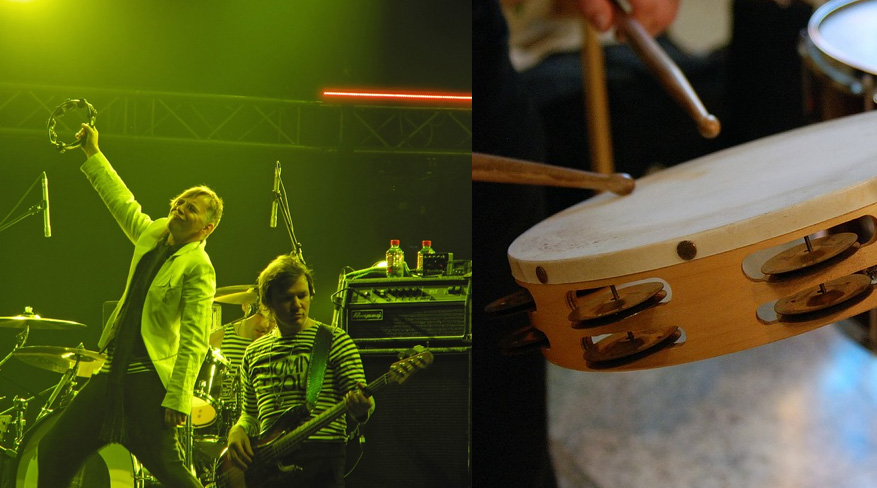
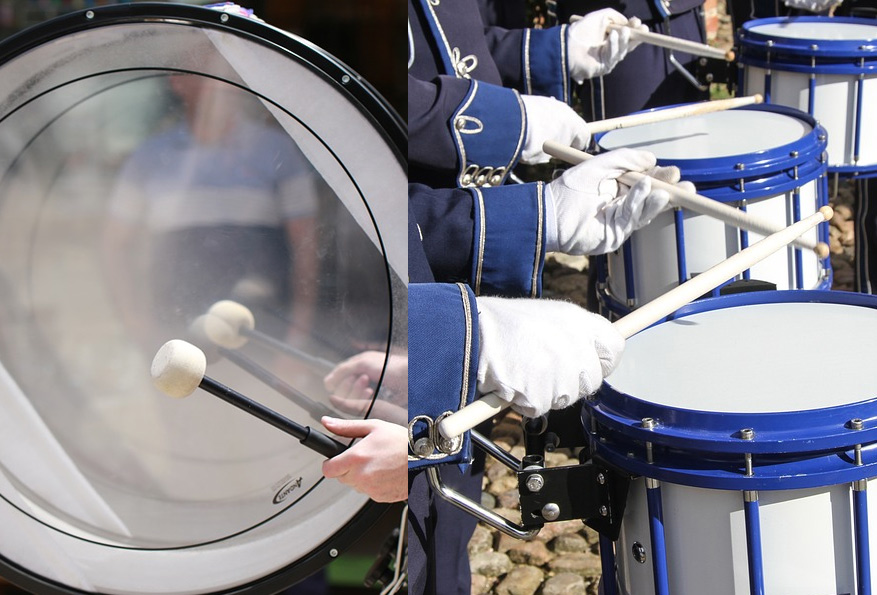



Could you please tell me how to name the 8 playable notes.? Thank you. Una.
Hi Una,
If you’re using the multi-scale drum, the notes vary based on the scale you’re using. The notes for each scale are under in the ‘Tuning System’ section on the article.
Mike